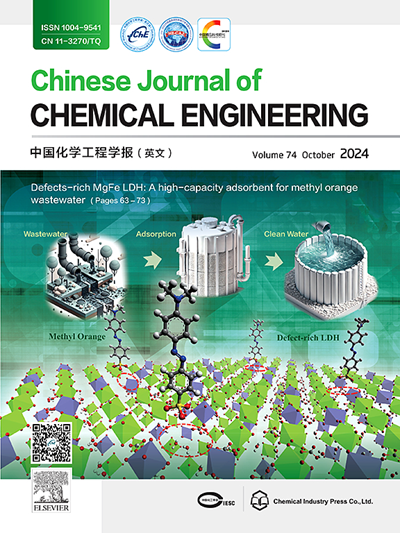Hybrid model of multimodal based on data enhancement and lumped reaction kinetics: Applying to industrial ebullated-bed residue hydrogenation unit
IF 3.7
3区 工程技术
Q2 ENGINEERING, CHEMICAL
引用次数: 0
Abstract
Industrial ebullated-bed is an important device for promoting the cleaning and upgrading of oil products. The lumped kinetic model is a powerful tool for predicting the product yield of the ebullated-bed residue hydrogenation (EBRH) unit, However, during the long-term operation of the device, there are phenomena such as low frequency of material property analysis leading to limited operating data and diverse operating modes at the same time scale, which poses a huge challenge to building an accurate product yield prediction model. To address these challenges, a data augmentation-based eleven lumped reaction kinetics mechanism model was constructed. This model combines generative adversarial networks, outlier elimination, and L2 norm data filtering to expand the dataset and utilizes kernel principal component analysis-fuzzy C-means for operating condition partitioning. Based on the hydrogenation reaction mechanism, a single and sub operating condition eleven lumped reaction kinetics model of an ebullated-bed residue hydrogenation unit, comprising 55 reaction paths and 110 parameters, was constructed before and after data augmentation. Compared to the single model before data enhancement, the average absolute error of the sub-models under data enhancement division was reduced by 23%. Thus, these findings can help guide the operation and optimization of the production process.

求助全文
约1分钟内获得全文
求助全文
来源期刊

Chinese Journal of Chemical Engineering
工程技术-工程:化工
CiteScore
6.60
自引率
5.30%
发文量
4309
审稿时长
31 days
期刊介绍:
The Chinese Journal of Chemical Engineering (Monthly, started in 1982) is the official journal of the Chemical Industry and Engineering Society of China and published by the Chemical Industry Press Co. Ltd. The aim of the journal is to develop the international exchange of scientific and technical information in the field of chemical engineering. It publishes original research papers that cover the major advancements and achievements in chemical engineering in China as well as some articles from overseas contributors.
The topics of journal include chemical engineering, chemical technology, biochemical engineering, energy and environmental engineering and other relevant fields. Papers are published on the basis of their relevance to theoretical research, practical application or potential uses in the industry as Research Papers, Communications, Reviews and Perspectives. Prominent domestic and overseas chemical experts and scholars have been invited to form an International Advisory Board and the Editorial Committee. It enjoys recognition among Chinese academia and industry as a reliable source of information of what is going on in chemical engineering research, both domestic and abroad.
 求助内容:
求助内容: 应助结果提醒方式:
应助结果提醒方式:


